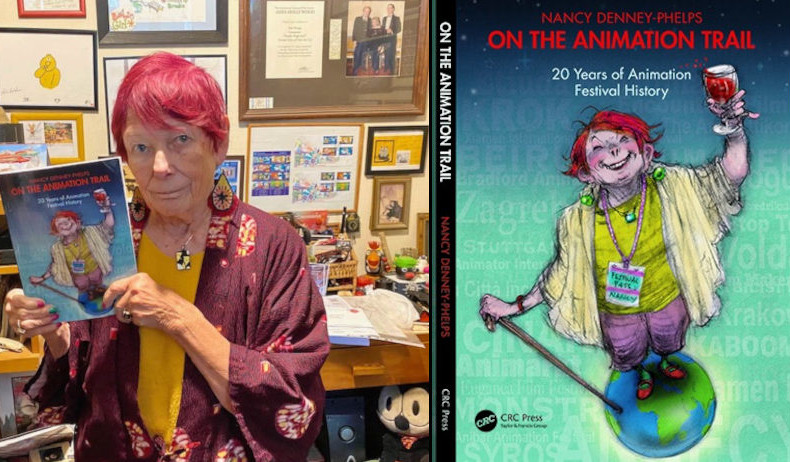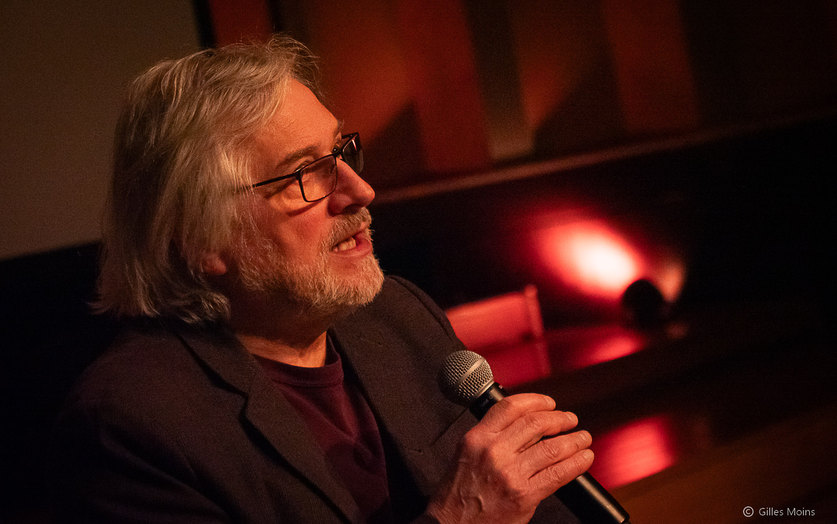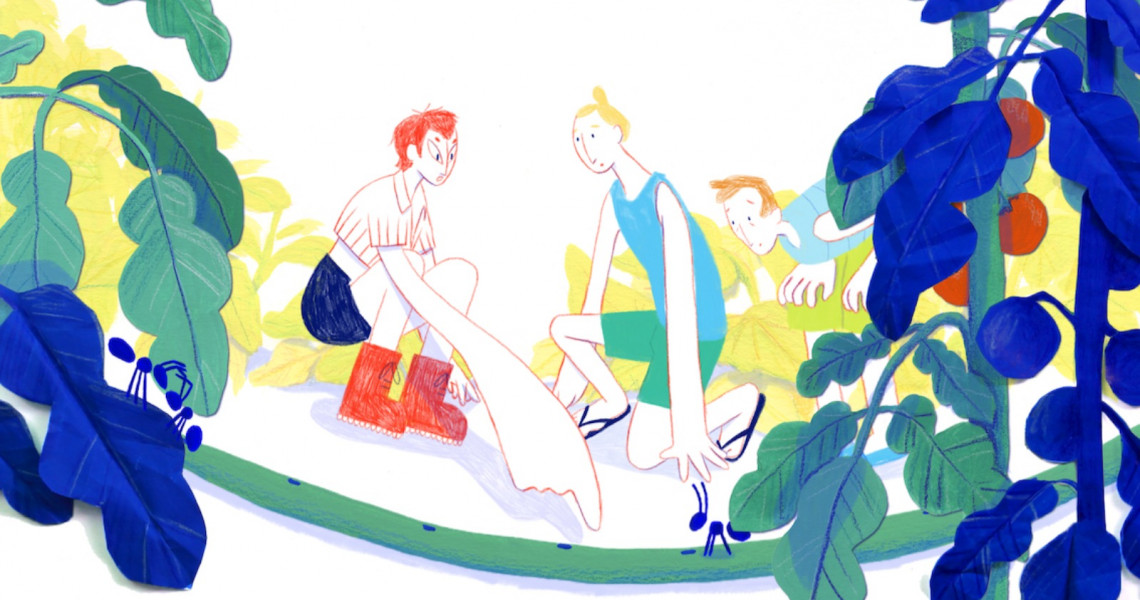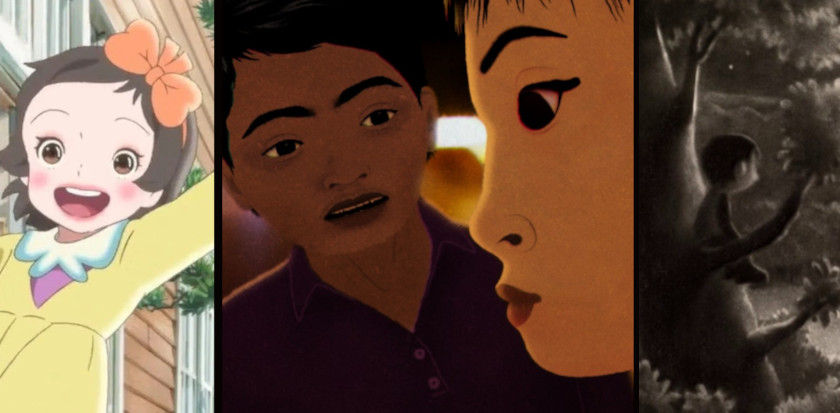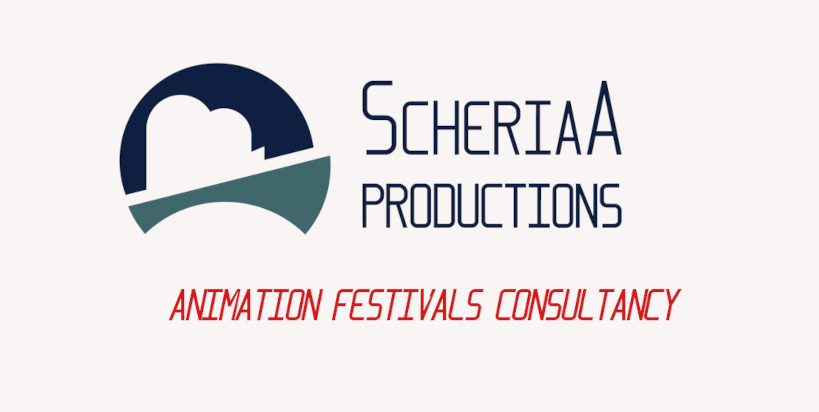Meditations/Reflections In/On Style(s): Notes on Anima Festival Brussels 2024
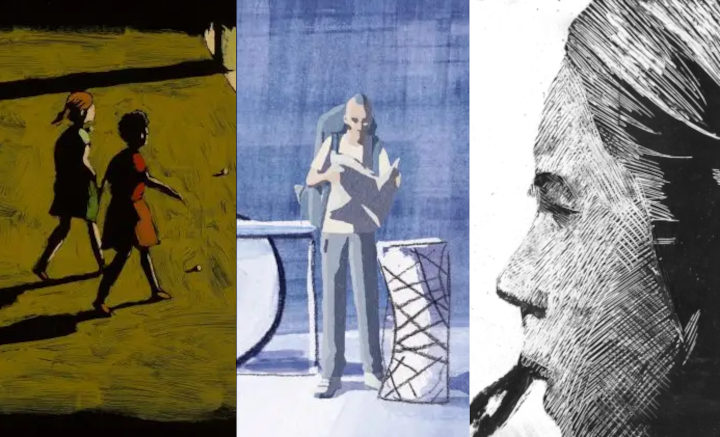
As usual, Anima Brussels (23 February- 3 March 2024) with its taste in selection and specific position in the calendar, provides a ground to encounter, between competition and special/other programs, a rather wide range of shorts, including premieres and relatively known entries, of different varieties, without much prejudices, from sheer experimental to honestly entertaining – thus inviting to appreciate or question, or both, preferences/policies amidst the landscape of the artform at the break of seasons.
Zippy Frames already covered the Belgian angle proper. I'd then pick my choices from an international field, this time beyond awards and across categories, – as usual, in that trying to observe and to follow – even if sometimes might be guilty of reading in – certain common threads or undercurrents possibly clipping through.
Swiss master Georges Schwizgebel’s latest piece ‘D'une peinture... à l'autre' (Switzerland, France) might seem right from his core canon, even too much so, as a variation of the well-familiar, tried-and-true. Yet, it also feels, if at second glance, fresh and newly-sharply deep, or shall we say, rather radical – exactly in posing-solving even if all the good old issues like origins of style and/or limits of stylization Characteristically, this is manifested along the meditative jumping journey oscillating between openly cited masterpieces of European modernity art, half a (decisive) century apart: from Eduard Manet’s Olympia to, in the final coda, Felix Vallotton’s The White and the Black – through whimsy reminiscing others and stylizing versions, and landscapes inhabited with ‘extras’ in this director trademark laconic strokes. And of course, in his also no less signature mode of 'total animation' – a transformative uninterrupted wave of frame-into-frame transitions, in place of cuts – even more than usual 'motivated here.
One can surely read in this dynamically oblique narrative a sense of (post)colonial discourse, with racial representation-stereotyping angles (following the nods from one artist to another, along with old reactions-discussions, public aura around their works; and maybe picking up on the themes of his previous film 'Darwin's Notebook'). But what's to me no less important is that it's so embedded in art history, and in its most 'instrumental' dimension – in a way, an ideal type of artistic reflection, an artist's self-introspection, fearless but without sacrificing elegance and grace, and artistry per se, and preserving almost raw sensitivity. Which plays out against the distinct, as usual, soundtrack. And to me, if I’m guessing the intention right, be that not exactly along the genre character of the actual music score – which is rather a ballad of sorts here – but in the structure-development it works like a perfect fugue: repetition with a spiral ascent, to new levels of meaning and passion.
Another facet of cultural introspection can be seen in ‘La Grande Arche’ (dir. Camille Authouart, France), a subtly idiosyncratic, as if sketch book diary-observation of life flow in the strange-unique, seemingly quite ‘non-Parisian’ Paris quarter La Défense. I first saw it within the special-thematic 'architectural' program at the Chicago International Film Festival last fall, and that looked quite appropriate and instructive – it's indeed an intrinsic portraiture of urban space per se, to my mind; and of the rest, or related things, through this particular lens. Which includes, importantly, the urban art, specific to the place, and characteristically so – like the monumental constructions of Alexander Galder or the headless figure Icaria by Igor Mitoraj, (besides the title piece, of course, the infamous ark, an icon of new urbanistic style). Those artifacts of contemporary art are like actors-characters here, along with people around them, and more, they would be brought to (second) life and to play, culminating the narrative in a light phantasmagory of sorts. Furthermore, that reveals the acute sense of living/existing as if inside the dramatic history of art(s), being played out on the grand stage of architectural ideas of the place and time.
In a peculiar rhyme to that stands in the same competition program a humbly brave exercise ‘Misaligned’ (dir. Marta Magnuska, Poland) that can be perceived as yet another study of space – this time of the blank piece of paper, or screen for this matter, to be filled-animated with graphic elements in all versions of free composition. It really feels like an exploration of the elementals of design and graphics as such, both tense and playful enough to build the visual narrative of alienation, and cracks in relations through dynamic juxtapositions of sketchy minimalist drawings. Amazingly, this seemingly 'formal' etude does not hide behind the meditation of form(s) but, on the opposite, opens and enhances the emotional and even existential kind of nerve.
And there stands also yet another, to my view, the study of the very nature and limits of graphic art on the screen, smelled into dense messaging– 'From Our Side' (dir. Simone Massi, Italy). The synopsis states: “The whistles of Eugenio Montale's poetry We had studied for the afterlife, transformed into video poetry by Simone Massi, are interpreted in the same way as those signals or sounds that surprise us in life as omens, a broken mirror, an owl's cry, omens of this that awaits us, a nightmare from which we would like to awaken. The nightmare in this case is the history of the twentieth century. And to awaken from reality, the only thing is to realize that we are all "already dead without knowing it".” I might not be catching all the hints and symbolic values in the poem (voiced-over, by the way, by none other than Wim Wenders), or around it, as a stranger-observer, but it’s hard not to be caught by the bare force of exposed technique, the very texture of dry-point scratching and else, employed to also minimalist in essence but no less dramatic, almost monochrome panning angle-shot, as it seems, uninterrupted flow to the dire or gloomy-enlightened end.
In a similar regard, what stood out for me within the ‘Animation Night’ variety show was ‘Issues With My Other Half’ (dir. Anna Vasof, Austria), where the director, in the vein of her earlier self-performative experimentation and under the proclaimed method of ‘non stop stop motion’, goes to the extremes of physicality and ‘corporal metaphorics’, echoing, if polemically-ironically, classic surrealist vocabulary of body-parts replacements-substitutions-transformations and scale shifting, through the new multi-media thesaurus, means of non-magical post-cinematic deceit and illusion – to explore, it feels, the basic properties of the technicist surreality or sort of ‘mechanistic corporality’ – to find, to come to peace with self-body-image and idea. And doing so, in a series of vignettes, somewhat unexpectedly elegant, with an iota of sharp, if darkish humor.
At my selective glance, a couple of titles in the 'Watch & Dance' category (that is – music videos/clips) caught my eye. First, 'Miles Davis, « What's Love Got to Do With It »’ (Germany, US) – not the first attempt at jazzy variations for Irina Rubina (I had a chance to mention before her earlier works). This one, though, is a different case – specially done, as an 'official video', on the unique track of the classic and using his original artwork as one of the sources for the visual improvisation: again, in my view, artistically quite self-aware, carefully mixing the semi-abstract with the quasi-figurative in perfective rhythmic structure (see more in the director's talk with my colleague, and the film itself).
| Related: 'What's Love Got to Do With it' by Irina Rubina |
And then, ‘La Chica, « Oasis »’ (dir. Marion Castéra, France, Venezuela) – a bravely odd, yet engaging exercise: at a single-shot close-up, a performer's head-face undergoes non-stop transformations, in the range from Frida Kahlo impersonations-portraiture (utilizing mutual resemblance, supposedly) to the related-stylized elements-artifacts of the specific cultural oikumene – a peculiar general concept of ‘oasis’, maybe.
Finally, last but not least, in no way, in Queer Stories program, ‘Maurice’s Bar’ (dir. Tzor Edery, Tom Prezman, France, Israel), a film I’ve been waiting for a chance to say a word about since saw it last fall at Chicago festival, again (where it got Silver Hugo in animation category, on the back of Annecy Connexion Award earlier in the year). A drug queen's remembrances of the first ever Parisian queer bar, back in the early 1900s, its atmosphere and tribulations, and, in no small measure, the figure of the wanchancy charismatic owner, an Algerian Jew, are rendered in quite a stylish manner. A bit, if manifestly, old-schoolish, with a retro nod either to art-nouveau or also to psychedelics in design and flow; and in character animation in its best action/composition-wise, on captivating score-songs… All to come to the minimalist sobering epilogue, in 1942 France, on the train to nowhere, as the synopsis euphemistically covers, though the real-life prototype is known to have perished in Auschwitz. Thus, the stylizations-reflections meet the history, its weight, and scale.
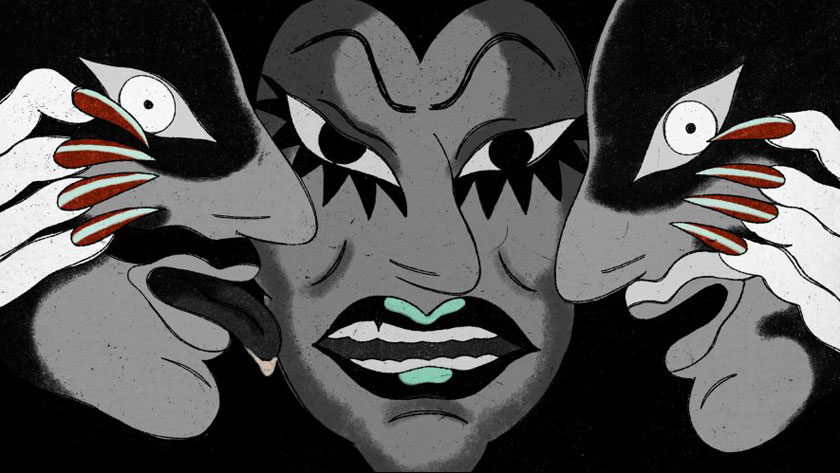
Maurice's Bar
Drawing a moral, if any, or maybe to justify once more this perspective, can fall back just on the old adage. In times of new, or continued eternally troubles, and misery, and tragedies, if you're not getting involved immediately, in the direct-action art of any variety, then perhaps that's a moment to pause and to look inside, even if in terms of sheer honest artistic introspection.
contributed by: Mikhail Gurevich




